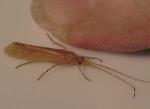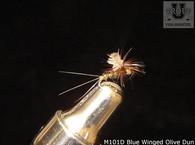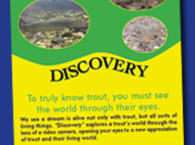
Cadisflies eat algae and as such can be found primarily on the fertile streams that have the lower pH. However, the Little Black Caddis can be found in waters a less fertile.
The caddis hatch starts during the warmest part of the day, which is usually mid-afternoon and the water temperature about forty-five to fifty degrees F. When the hatch starts it is a sight to behold because it is massive with thousands of the tiny insects in the air and on the bushes. The trout are well tuned into the hatch and it will be useless to try any other fly.
The pupae swim to the surface of the water and hatch into adults. After hitting the surface, they will float for a good distance as they wait for their wings to dry. During this time, a dry fly to imitate the adult caddis will be very effective.
Most of the caddisflies dip down and touch the water to deposit their eggs. After they are done laying their eggs, they fall dead into the water. Unlike mayflies, they will need several attempts to deposit their eggs and during this time they may make several trips to the bushes and back to the water. After the caddisflies die, they tend to collect at the heads of pools, pockets behind boulders and in the eddies.
As the hatch gets close to ending, adults from the previous day hatches, return to the water to deposit their eggs. For a brief period of time it is possible to observe both hatching caddisflies and egg laying caddisflies on the surface of the water at the same time. The trout will feed aggressively taking newly hatched caddisflies and the egg laying caddisflies at the same time. However, about two hours before dusk, the caddis stop hatching and only the egg layers will be on the water until dark.
Often times, about the time that the hatch starts, more trout can be taken on the pupae imitation than on the adult caddisflies. After hatching the pupae swim to the surface of the water using their hinged middle legs as paddles. When they reach the surface, they shed their pupa skin, shake their wings and fly off. The pupae have no defensive measures to escape the trout and the trout feed eagerly on them.
When the caddis flies are hatching, it is often overlooked by the angler because the trout are taking the pupae as they assent to the surface. It is easier for the trout to take them than it is to take them from the surface. In this case all you will see is a flash of the trout and not the trout crashing on the surface.
Anglers are often looking for the Quill Gordons and do not notice the Little Black Caddis until they see the adults about 2 or 3 days later when they return to the water to deposit their eggs. If you pay attention to the caddisfly hatch, you will catch even more trout than you would with the Quill Gordon hatch.








